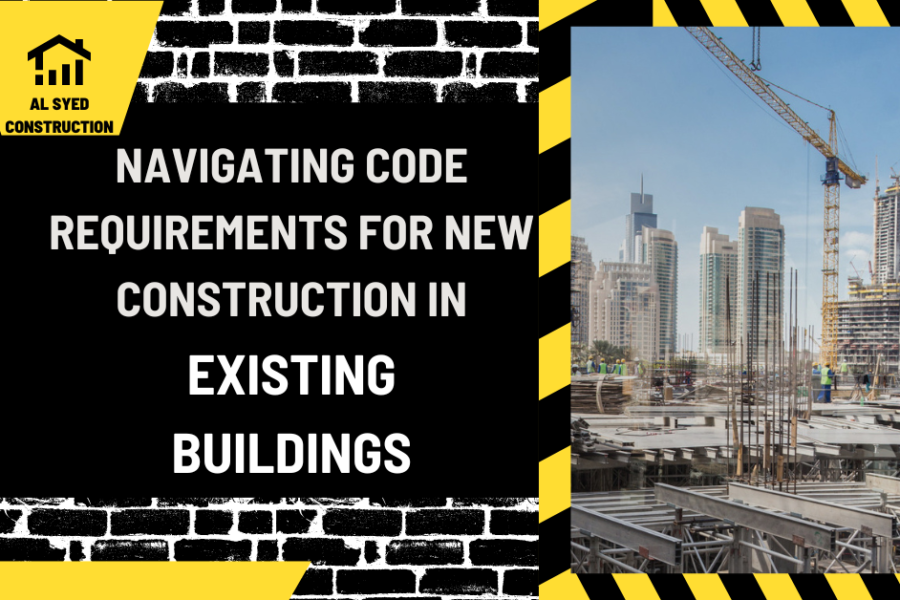Navigating Code Requirements for New Construction in Existing Buildings
Table of Contents
Introduction
When undertaking new construction within an existing building, it is crucial to adhere to specific code requirements to ensure safety, compliance, and functionality. These regulations are designed to address the unique challenges that arise when integrating new structures or systems into older buildings. This article explores the key code requirements that must be followed in the area of the building where the new construction is taking place, highlighting the importance of maintaining standards for a successful and safe renovation.
Understanding Building Codes and Standards
The Role of Building Codes
Building codes are sets of regulations that govern the design, construction, alteration, and maintenance of structures. They are developed to ensure the safety, health, and general welfare of building occupants and the public. When new construction occurs in an existing building, it is essential to comply with the current building codes, which may have been updated since the original construction.
Key Codes and Standards to Consider
Several codes and standards are relevant to new construction in existing buildings, including the International Building Code (IBC), the National Fire Protection Association (NFPA) codes, and local building ordinances. These codes cover various aspects, such as structural integrity, fire safety, accessibility, and energy efficiency.
Specific Code Requirements for New Construction in Existing Buildings
Fire Safety and Egress
New construction must comply with fire safety requirements, including the installation of fire-resistant materials, fire detection and suppression systems, and proper egress routes. These measures are crucial to ensure that occupants can safely exit the building in the event of a fire.
Accessibility and ADA Compliance
The Americans with Disabilities Act (ADA) and other accessibility codes require that new construction provides equal access for individuals with disabilities. This includes features such as ramps, elevators, and accessible restrooms, ensuring that all areas of the building are navigable for everyone.
Structural Integrity and Seismic Upgrades
In areas prone to seismic activity, new construction may need to include seismic upgrades to improve the building’s resilience to earthquakes. This can involve reinforcing existing structures, upgrading foundations, and implementing other measures to prevent collapse or significant damage.
Navigating the Approval Process
Obtaining Permits and Inspections
Before beginning new construction, it is necessary to obtain the appropriate permits from local building authorities. This process involves submitting detailed plans and specifications for review and approval. Inspections are conducted at various stages of the construction to ensure compliance with code requirements.
Coordinating with Stakeholders
Effective communication and coordination with stakeholders, including building owners, contractors, architects, and code officials, are essential for a smooth construction process. Clear understanding and adherence to code requirements can prevent delays, additional costs, and legal issues.
Conclusion
New construction in existing buildings presents unique challenges that must be addressed through compliance with specific code requirements. Adhering to building codes, fire safety regulations, accessibility standards, and structural integrity guidelines ensures the safety, functionality, and longevity of the renovated space. By navigating the approval process and coordinating with all stakeholders, successful integration of new construction into existing buildings can be achieved, enhancing the overall value and utility of the property.




